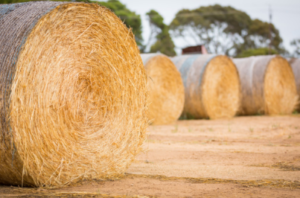 Whether it’s natural fibre sisal or synthetic polypropylene baling twine, it helps farmers maximize their hay and straw harvests. Properly used, it also reduces the risk of lost or rotting bales and entanglements in machinery.
Whether it’s natural fibre sisal or synthetic polypropylene baling twine, it helps farmers maximize their hay and straw harvests. Properly used, it also reduces the risk of lost or rotting bales and entanglements in machinery.
Unused or discarded twine often ends up in landfills, piles up on landowners’ property (where it can gum up machinery or be eaten by livestock and horses, causing severe digestive issues) or is burned. For quality hay baling twine, check this out.
Uses
Baling twine is an essential tool for those who make a living off the land. It helps secure a bale of hay for storage and transport. It’s also useful for several crafting projects and around the house.
Most made-in-the-USA options from companies like BridonMAX come in a guaranteed number of feet per carton, making it easy to track how much twine is left on the spool for use in the baler machine. It’s also helpful to get a different twine colour for each paddock, cutting, field or person doing the baling – it makes it easy to know which twine is which when it comes time to load the machine.
Some farmers choose to use netwrap instead of twine on their round bales. According to a study by the American Society of Agricultural and Biological Engineers (ASABE), bales wrapped in netwrap tend to maintain their shape, resulting in less hay loss during transportation, handling and storage.
Safety
It’s important to remember that there is danger associated with handling baling twine, just as with any other type of equipment—countless stories of horses tangled up in loose twine, resulting in severe injury or death. Leaving loose twine lying around is an absolute no-no for horse farms and pony clubs, just as with any other farm machinery.
It is crucial to follow all manufacturer safety guidelines. Ensure the PTO is disengaged and the engine shut off when you’re preparing to work on or adjust the baler, and be very careful when working under the rear gate.
When loading twine into the baler, check the guaranteed number of feet per carton to ensure you don’t over-buy. Too much twine can cause the knots to slip when pulled off the bill hook and lead to baler failures. Also, ensure the twine is of the same quality and diameter as your baler’s original twine; thinner twines are more prone to slipping off the bill hook and knot slippages.
Disposal
The twine used to bind bales of hay and straw must be disposed of properly. Sadly, many farmers dump plastic twine in landfills, which harms the environment. Other farmers burn it, releasing harmful chemicals and toxins into the atmosphere and soil. The Reyenvas brand of recycled twine solutions is certified by several organizations, including APE (Agriculture Plastics Environment), the Board of Andalusia, EuCertPlast, AENOR, and ERDE. Black Label Twine and Tiger Twine are examples of this solution, including natural fibre twines made from sisal and jute.
At well-run boarding stables and horse farms, it’s common practice to place the twine in a bag or bin for safe disposal once it’s untied from the bale. It prevents the twine from becoming a trip hazard or gumming machinery. It also helps protect the Osprey and other wildlife and reduces environmental pollution.
Recycling
The baling twine many farmers use is natural fibre or polypropylene plastic. It’s common for twine to be discarded on farmland after the hay is tied and baled. This twine can then be inadvertently ingested by livestock or horses, leading to digestive issues and even death. Twine can also pose a physical hazard for people, as frayed strands can cause cuts or puncture wounds.
Many states and provinces have hay bale polypropylene twine recycling programs or drop-off sites. Check with your local recycling department for more information and how to proceed. The recyclable twine will be bagged and placed in a bin for disposal.

